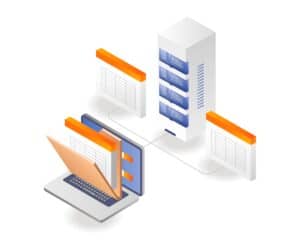Organizations look to IT Asset Management (ITAM) solutions to ensure that all assets are optimally managed. IT administrators often wonder if they can use a configuration management database (CMDB) to meet ITAM requirements, and in this article we will understand how a well-structured CMDB can support your corporation's IT Asset Management.
What is ITAM?
ITAM can be defined as a set of business practices that tie together financial, inventory (such as configuration management) and contractual (such as software licenses) functions to support lifecycle management and strategic decision making for the IT environment.
To understand what it is IT asset management, it is important to initially define an asset. ITIL v3 defines an asset as anything that can “contribute to the delivery of a service”. ITIL 4 defines an asset as “any financially viable component that can contribute to the delivery of an IT product or service”.
IT asset management, therefore, encompasses the management of everything that IT uses to deliver the services, throughout the entire lifecycle of the IT assets.
Benefits of ITAM
Provides a true source
Asset management creates order. Assets tend to be tracked in multiple places by multiple people. ITAM offers data consolidation, providing systems that get the job done without the need to continually track artifacts, monitor usage, and interpret dependencies.
Improves usability, reduces risk and reduces waste
Information is always up to date, which helps teams eliminate waste and increase utilization. Control also provides better security and compliance with legal policies, reducing risks associated with regulatory penalties.
Increases productivity without losing reliability
Asset management tools are extremely helpful as teams embrace DevOps and SRE principles. There is greater reliance on infrastructure and platform services, and effective asset management provides the ability to manage consumption.
Supports IT and business practices and empowers teams
Asset management supports ITSM and ITIL processes such as change, incident and problem management. With the right information within easy reach, teams can move in and better predict impacts before they happen.
Reduce costs
It is likely that you have several licenses, instances or resources that are being overused or not used at all. Consolidating and constantly reviewing assets can provide insight into all assets and whether they are spending more money than necessary.
What is CMDB?
Let's think of the CMDB as a repository for all the data needed for IT asset management. The CMDB contains many assets as configuration items rather than functioning as a simple catalog. Configuration Item (CI) is any object needed to provide any service, inside and outside of IT.
The CMDB serves as rules being applied to assets within the ITAM solution. The organization receives information on the financial value of each asset and its impact on other factors. As a result, the CMDB is not a static database, but something that evolves in the cloud environment.
Benefits of CMDB
At its core, one of the biggest benefits of the CMDB is that it brings together all of the business data needed to run IT and brings it together in one place, giving IT operations visibility into all of the business's IT resources. Preventing data from being scattered across multiple different locations. A CMDB supports IT teams in many ways, such as:
- Reducing the time required to remedy an outage;
- Conformity;
- Avoid security and audit fines;
- Supports in decision making
- Supports in tracking software licenses and cloud costs.
Why is the CMDB essential for an effective ITAM?
A CMDB is only useful to ITAM if it is well integrated with ITAM processes. Most CMDBs act as a central repository for configuration data or can be easily integrated with other processes and their data stores. Some store information about devices connected to the network and information about software contracts and licenses associated with ITAM.
Storing all this data in a CMDB allows information to be generated in a single process that can be easily seen by other similar processes – this tight integration enhances these similar and related processes.
Tight integration between CMDB and ITAM reduces risk as it is able to log the server's CPU, RAM, IP address, MAC address, etc., giving you the opportunity to identify any warning signs if this information changes unexpectedly.
Manage your IT assets with 4Matt
Effective configuration management is very important for IT asset management. Good configuration management will help you to maximize the availability and reduce the risks of your IT services. ITAM can generate huge savings for your organization by helping to identify and remove unused IT assets and supporting regulatory compliance.
4Matt offers managed services with immediate access to people, process and technology experts, thus allowing your team to evolve in business-critical initiatives. Click here and talk to an expert.

